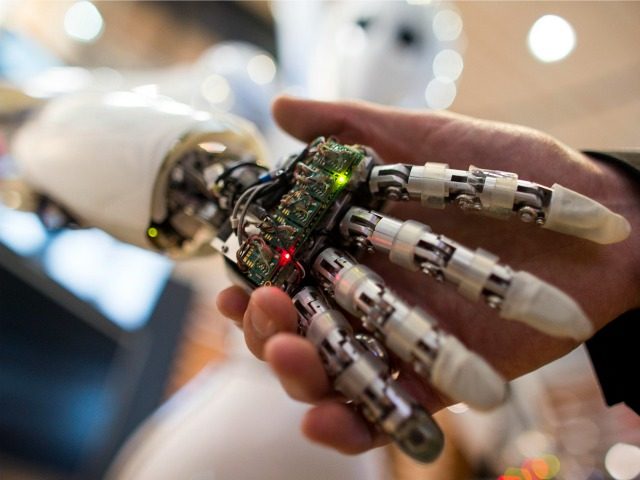According to Forbes, robot nannies have become hugely popular in Japan and China and are slowly beginning to arrive in the U.S.
Forbes reports that robot nannies taking care of children across the U.S. may not be as far-fetched as it sounds as some people in countries such as Japan and China have already adopted robotic caregivers into their everyday life. Zoltan Istvan, a technology consultant and futurist based in California discussed the idea of robot nannies saying, “We’re talking about the Holy Grail of parenting. Imagine a robot that could assume 70% to 80% of the caregiver’s role for your child. Given the huge amounts of money we pay for childcare, that’s a very attractive proposition.”
Istvan is correct that the cost of nannies and caregivers in the U.S. is quite high — in California, the annual daycare cost for one child is $22,460 which is approximately 12 percent of the medium family income. Nanny robots fall under the category of “companion robots” and are becoming increasingly popular in recent years. A report by P&S Market Research estimates that demand for companion robots will increase from $3.8 billion in 2015 to $34.1 billion by 2022. Part of the reason for the rapid increase in demand is due to the lowering price of companion robots.
Between 2005 and 2015, the general price of companion robots decreased by 27 percent and is currently predicted to decline by as much as 22 percent by 2025. Currently, these robots are not particularly advanced, but that’s expected to change in coming years. Henrik Christensen, a computer science professor at the University of California San Diego said, “They’re very, very basic. Think of them as nannycams on steroids — you can use them to monitor your kids from a distance, talk to them, entertain them, and do basic surveillance. So if you’re in the next room or next door they can be useful.”
One companion device, Kuri, was introduced at CES in January. The device costs $700, has Wi-Fi, Bluetooth, a 1080p camera and even has human features and expressions that change when the device is interacted with. Kuri responds to voice commands, replies in electronic chirps and can roll around an owners house on wheels, keeping an eye on children as well as maintaining home security. Upon it’s release at the end of 2017 Kuri will also reportedly recognize faces and emotions, play podcasts, and tell stories.
Henny Admoni, a post-doctoral fellow at the Robotics Institute of Carnegie Mellon University, commented on the robot companions saying, “These robots are really great at speech recognition, and are able to figure out the semantic structure and respond intelligently. They’ve also got the ability to recognize faces and objects and the world around them.” However, Admoni says the robots inability to interact with the physical world around them in many ways will hinder their ability to provide care. “They can’t go to the fridge and grab a bottle of juice,” says Admoni. The robots are also not able to think for themselves, “if you tell a robot to read a story to Suzy because she’s crying, it won’t be able to extrapolate to do the same thing next time she cries.”
Robot nannies may have some way to go before they become commercially viable but it seems that the future of robotic caregivers is closer than we may think.
Lucas Nolan is a reporter for Breitbart News covering issues of free speech and online censorship. Follow him on Twitter @LucasNolan_ or email him at lnolan@breitbart.com

COMMENTS
Please let us know if you're having issues with commenting.